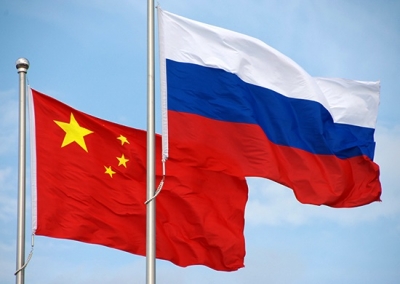New Delhi, May 6 : Against the backdrop of Russia cutting its usage of the US dollar, the Chinese yuan and Russian ruble are now the most used currencies in bilateral trade, which was unimaginable even two years ago.
The US dollar has stepped down from the altar, and now people can see it more clearly, Global Times, a Chinese mouthpiece, said in a recent article.
“If we look at the structure of trade between China and Russia, more than 70 per cent of bilateral trade is settled in yuan or ruble”, Anton Siluanov, Russian Minister of Finance, was quoted as saying by Tass Russia News Agency recently.
When asked if the ruble or yuan could replace the US dollar, he replied: “We are already looking at this.”
Chinese Customs data showed bilateral trade turnover between China and Russia is $53.8 billion in the first quarter, and the figure between China and the US is $161.6 billion.This means China’s trade with Russia is equivalent to about 30 per cent of its trade with the US.This key data may help people to have a more intuitive understanding of the current trend of de-dollarisation and currency diversification, Global Times said.
Robert Semonsen writing for the The European Conservative said that since the beginning of 2022, the ruble-yuan trade has increased eightfold.
Additionally, it has been reported that Russia and Iran are working on creating a cryptocurrency backed by gold, with the idea that the gold-backed stablecoin could replace the US dollar in international trade payments.
China, the primary rival to the United States’ global economic hegemony, and Brazil, which has Latin America’s largest economy, reached a deal to dump the US dollar as an intermediary currency when carrying out trade and financial transactions.
The two economic juggernauts will now conduct bilateral trade in their own currencies, exchanging yuan for reais, further internationalising the yuan, Semonsen said.
Beijing has similar currency deals with Russia, Turkey, Pakistan, and several other countries-and it continues to expand that list of countries.
In February 2022, members of the China-led Shanghai Cooperation Organization (SCO) – a bloc that consists of China, Russia, India, Pakistan, Uzbekistan, Kazakhstan, Tajikistan, and Kyrgyzstan – agreed to increase the use of their national currencies in trade between the countries.
During the last week of March, in what amounted to a historical transaction that marked yet another blow to the US dollar’s global hegemony, China carried out its first-ever yuan-settled energy deal-65,000 tons of liquified natural gas (LNG) from the United Arab Emirates (UAE), Semonsen said.
The topic of de-dollarisation has recently become popular and experienced a significant increase in social media conversations on platforms such as Twitter and Reddit during the first quarter (Q1) of 2023, with a 600 per cent surge compared to the previous three months.This trend can be attributed to the growing number of countries that are exploring options beyond the US dollar, revealed the Scoial Media Analytics Platform of GlobalData, a leading data and analytics company.
A BRICS currency could shake the dollar’s dominance, a former White House advisor has said.
De-dollarisation’s moment might finally be here, Joseph Sullivan, former special advisor and staff economist at the White House Council of Economic Advisers during the Trump administration, wrote in Foreign Policy.
Talk of de-dollarisation is in the air.Last month, in New Delhi, Alexander Babakov, deputy chairman of Russia’s State Duma, said that Russia is now spearheading the development of a new currency.It is to be used for cross-border trade by the BRICS nations – Brazil, Russia, India, China, and South Africa, Sullivan wrote.
(Sanjeev Sharma can be reached at [email protected])
#Buoyant #rubleyuan #trade #China #Russia #Delhi #Uma #Delhi #New Delhi #Turkey #Beijing #Idea #Twitter
.






